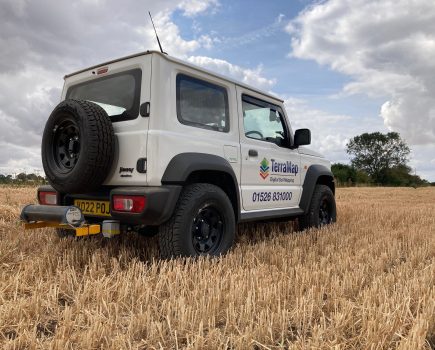The saying “two years are never the same” couldn’t be any more accurate than between this season and last. Winter wheat is around two weeks earlier to reach GS39, and in fact the earliest drilled crops had flag leaves fully emerged in the last few days of April. In the South East only 30% to 50% of average April rainfall fell, with only five days of rainfall above 1mm.
We therefore have levels of septoria lower than we’ve seen in several years, making T2 decisions incredibly difficult. With the price of wheat as low as it is currently, we are very aware not to overspend, but as the majority of varieties being grown are for milling, keeping disease levels to a minimum is paramount.
Due to the low levels of septoria, T2 applications have been built around brown and yellow rust, depending on variety. Combinations of actives such as isoflucypram (Vimoy), mefentrifluconazole (Revysol), prothioconazole, tebuconazole and pyraclostrobin (Comet) will all provide very good activity on both yellow and brown rust, while Vimoy and Revysol and fenpicoxamid all offer reasonable septoria activity, which will be adequate in a low pressure year like this.
T3 decisions will be equally difficult, as so much depends on what the weather does at the end of May/early June. Where costs have been cut at T2, it might allow a more comprehensive T3 if it turns wet. Actives such as pydiflumetofen (Miravis) and fenpicoxamid (Univoq) fit the T3 slot well, as both will give good septoria and fusarium protection, provided they were not used at T2.
Spring barley has now had its T1 based around prothioconazole, fluxapyroxad (Imtrex), mefentrifluconazole (Revysol) and pyraclostrobin (Comet) depending on drilling date and disease levels. T2s will be predominantly built around pydiflumetofen (Miravis) due to its market-leading ramularia control.
Maize has had a much better start to life this year than last. Soil temperatures have been much higher than previous Aprils, and so even early-drilled maize has come up a good shade of green, unlike last year’s pale yellow. Pre-ems have been hit and miss this year with the lack of moisture, and therefore early post-ems have been, or are imminently, planned. It is incredibly important to get maize herbicides on before the fourth leaf stage, as numerous trials suggest that if it is left any later, weeds will start to reduce yield.
Eary drilled peas are looking very well and have so far escaped weevil damage. Sadly, the same can’t be said for beans; warm dry weather has not been favourable and weevil damage has been severe in areas, resulting in some crops needing to be treated.
Beans have already started flowering but are only four to eight inches tall; if rain does not arrive in the next week or two then yields will be severely reduced.
Oilseed rape crops, bar a few exceptions, have finished flowering. It was a reasonably short flowering period this year, yet pod set has been good, mainly down to the dry, warm, flowering period. This has meant there’s been no need for two flowering sprays, with the next pass likely to be either podstick or desiccation.
By Brett Pointing, Agronomist based in Dorset for CCC Ltd.
For more like this, sign up for the FREE South East Farmer e-newsletter here and receive all the latest farming news, reviews and insight straight to your inbox.







